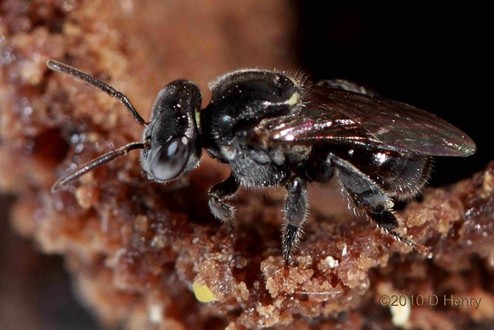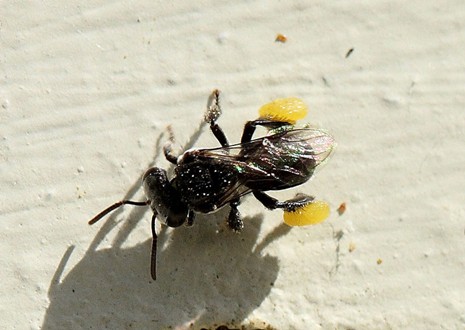In Australia there are six species of bees which belong to the genus Tetragonula. Up until recently these bees went by the genus name Trigona. This was a very large genus, containing over a hundred species of bees, with some as far distant from Australia as Mexico and Argentina. With modern DNA analysis bee experts have found that our bees, and those of some other counties in our region, differed significantly enough to be classified into their own genus and are now known as Tetragonula.
Austroplebeia are the other genus of stingless bees found in Australia. These are lesser studied and it is thought that there is between three and six species in this genus.
At Kin Kin Native Bees we keep the most common three species of stingless bees;
Tetragonula carbonaria
Tetragonula carbonaria is the most widespread of the native stingless bees, and the most common in the south east of Queensland. It has be found in the Atherton Tablelands of north Queensland down to Bega, on the southern coast of New South Wales, but the bulk of the hives lie between Sydney and Bundaberg.
Tetragonula carbonaria is easily distinguished from others by the flat spiral pattern of the brood mass. This species has been the focus of much of the scientific research into stingless bees. The first written description of the bees was in 1854 in a report to the British Museum by a man named Frederick Smith who named them Trigona carbonaria. It is a great all rounder, being a pollinator of a wide range of fruit and nut trees as well as both native and exotic plants.

Austroplebeia australis
This species is most common inland but can also be found on the coast. The small creamy white marks at the base of the thorax help in it’s identification. Austroplebeia australis hives commonly have a small flute at the entrance to their hive which they close each afternoon with a lattice of nest material to act like a security screen door.

Tetragonula hockingsi
This species is most likely to be found north of Brisbane. It is slightly larger than most other species of native stingless bees. The eggs of it’s brood mass are laid in a more haphazard manner and this can help to distinguish a hive of these bees from one of Tetragonula carbonaria.
Although this species of bee is found naturally from about Gympie north, many people are successfully keeping hives of this species in Brisbane. They are generally more susceptible to the cold and will often not be seen on some days in winter when the T.carbonaria are happily foraging. Hives of Tetragonula hockingsi seem to handle the extreme heat better than some of the other species. This could a result of the heavier, darker cerumen they use to build their hives which is possibly due to a higher mix of resin in the resin/wax mix used to make the cerumen.
